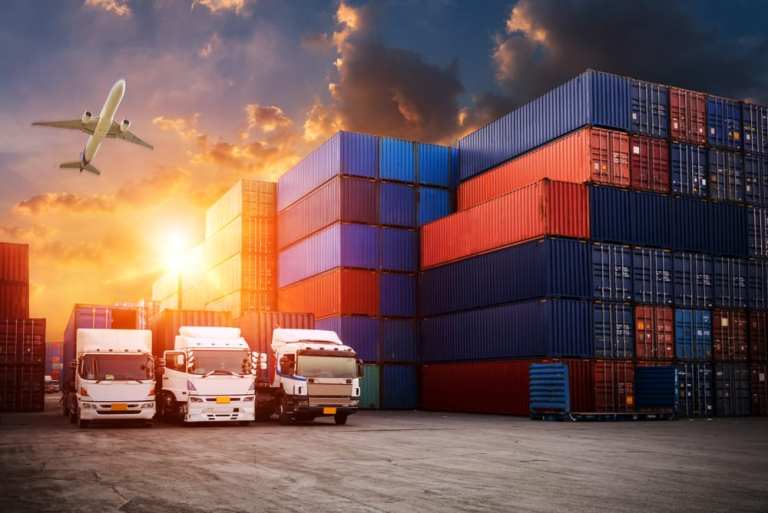
There is a chain reaction set off when a consumer makes a seemingly simple purchase online. While the shopper will click “buy,” then receive data about order confirmation, payment acceptance and shipping, the retailer itself is bombarded with information and a slew of decisions to make.
That single purchase provides several data points that retailers must assess to run their businesses most efficiently. How will this sale impact inventory? Was the item purchased a hot seller? Are the supply chains, logistics providers and warehouses functioning properly to get the order to the buyer on time?
This is the B2B side of retail, with supply chain management a complex process, often involving nets of thousands of suppliers, workers, infrastructures and digital platforms. There is much room for error and mishaps, whether it be a hurricane that affects a manufacturer’s ability to meet an order or a sudden trade dispute.
Technology Adoption Not Enough
These are the opportunities for cutting-edge technologies like artificial intelligence (AI), machine learning, Internet of Things (IoT), biometrics and more to make an impact on how retailers manage their back offices. Technology adoption among retailers and their supply chains is on the rise, but still has a long way to go.
According to Panasonic‘s Team Lead – Solutions Strategy & Sales Nancy Scala and National Sales Manager Jim Dempsey, even adoption of digital solutions isn’t enough for companies to be able to act with agility when split decisions must be made.
“Think of a facility manager who is managing an influx of volume of people and equipment,” Scala explained in an interview with PYMNTS. “Imagine, every day, the facility manager is making decisions for the facility. But what if you have thousands of facilities? How do you optimize across the network?”
As Dempsey noted, companies that have thousands of suppliers and business partners are embracing digital solutions like software to get business done. However, for retail giants like Walmart, the adoption of multiple ERP and warehouse management systems means the data in each platform is stuck in a silo.
“Trying to fit all of that together is a daunting task,” he said. “They’re collecting all of this data, but don’t know what they can do with it.”
Finding The Right Data — In Real Time
Understanding which information will provide valuable, actionable insight — and which data is perhaps not as critical to analyze — is a major opportunity for technologies like AI, he continued. It’s a classic case of “you don’t know what you don’t know,” with organizations struggling to gain a holistic view of their operations to identify which areas they need to act on.
Dempsey offered the example of a fire at one of Macy’s largest warehouses just before the holiday shopping season last year. Being able to bounce back quickly from such an event cannot be done when data is analyzed manually. Rather, he said, IoT-connected devices, logistics and inventory management systems, and other technologies offer professionals the insight they need, allowing them to access information like what products were damaged, where shipments can be redirected and how they may fulfill orders through different areas of the supply chain.
Not only is it imperative that executives have this information, but it’s key that they have it in real time to make the fastest decisions possible.
Another example would be a natural disaster or storm that forces an order from a manufacturer to be shipped by air, rather than by ocean. Manually assessing this event would not necessarily provide logistics and supply chain executives with the information they need to understand that simply choosing to wait out the storm can have negative consequences all the way down the supply chain, back to the end consumer, noted Dempsey.
Panasonic is linking corporates with technology solutions to ensure that digital systems are communicating with each other, and that data can flow outside of silos. The firm recently announced a partnership with JDA Software to launch tools like Panasonic’s Visual Sort Assist for accelerated package sorting in warehouses, while integrating that sorting data into a main warehousing system.
Other tools include Panasonic’s out-of-stock detection capability and flowline analytics, again using automated technology and data analytics to manage inventory, and allocate equipment and workers in areas with the most need.
For retail today, said Scala, technology can provide organizations with the ability to stay innovative, while squeezing as much value from the infrastructure in place. Now, businesses are beginning to turn to data scientists as they realize that the digital systems they’ve adopted present data that cannot easily be analyzed or used, providing even more opportunity to boost the return on investment (ROI) for a technological investment.
The adoption of supply chain technologies has put retailers at a crossroads in how they’re going to get the most out of these tools. Artificial intelligence, said Dempsey, can turn pools of data from a conundrum to a decision-maker.
“Where there’s uncertainty, there’s opportunity to bring clarity,” said Dempsey. “Everyone is progressing in this IoT world, and everyone is at the first level of putting up sensors to capture data. Retailers want [technology], and look at what to do with the data, how to manage it. That’s what’s most important; that’s what they’re really struggling with.”